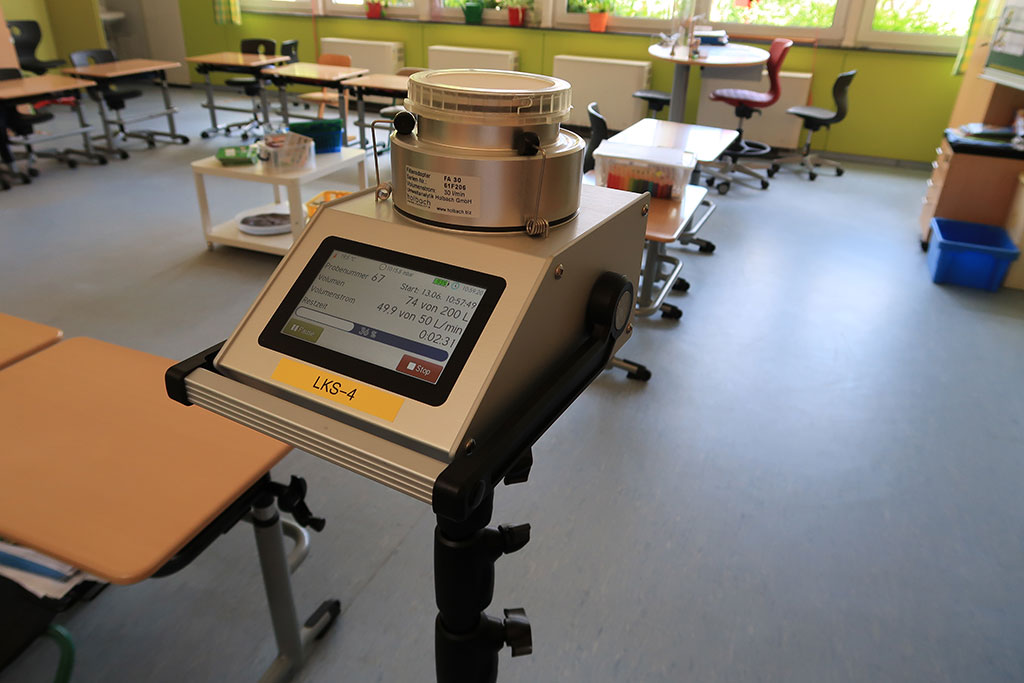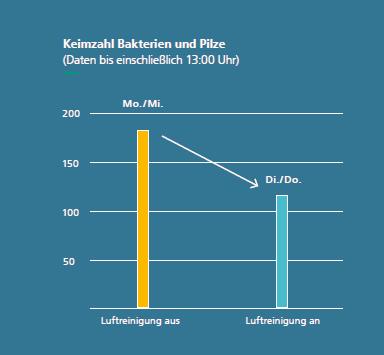Whether it is SARS-CoV-2, influenza or adenoviruses: the presence of infectious aerosols in the indoor air poses a hygiene problem and increases the risk of infection. The most effective solution is adequate ventilation. If this is not possible, mobile indoor air purifiers are a good alternative. These remove infectious aerosols from the air or inactivate the pathogens contained within.


In the laboratory, an indoor air purifier based on plasma technology - or more precisely a dielectric barrier discharge (DBD) - has been proven to be effective. Researchers at Fraunhofer IBP were commissioned by industrial partners to find out how well the device actually works in a classroom under real teaching conditions. Laboratory tests have demonstrated that plasma technology can disinfect surfaces and air. But whether this method is sufficiently effective in a real classroom has not yet been investigated.
Can a plasma device significantly reduce the concentration of viable airborne germs?
One thing is certain: under no circumstances may human pathogens such as SARS-CoV-2 be introduced into a classroom for experimental reasons. Therefore, Fraunhofer IBP researchers used common airborne germs as indicator organisms - fungi and bacteria that are naturally released by humans when they move. If these airborne germs are inactivated sufficiently, it can be assumed that viruses will also be inactivated. After all, viruses are at best as robust as bacteria, and much less resistant than fungi. Before, during and after each lesson, the researchers measured the airborne bacterial count, i.e. the number of germs capable of reproduction in the indoor air, at two representative points in the classroom. They used a tracer gas to identify suitable sampling points in the room beforehand. They also measured the air temperature, relative humidity and ozone concentration, since plasma is suspected of generating ozone.
How do tests work during regular school hours?
The tests took place in coordination with the school's funding body, school management and the parents' council during regular school hours. This did not restrict teaching activities in any way. The tests had no influence on the way the classroom was aired, nor on how airborne germs were introduced into the room by students, teaching staff or cleaning staff. This meant that the researchers studied the efficacy of the room air purifier under real conditions with all the imponderables. Background influences were largely eliminated by performing a large number of single measurements with and without an air purifier over a period of several days.
The results of the test show: airborne germs are significantly inactivated or “killed” by the air purifier - the total germ count dropped by 56 percent on the days the air purifier was in operation. In addition, no ozone was formed when the air purifier was in operation. Mobile indoor air purifiers that use plasma-based technology such as DBE can therefore significantly decontaminate indoor air without emitting any harmful substances. Electrical barrier discharge is therefore an effective method for reducing the risk of infection in rooms where a large number of people are present.